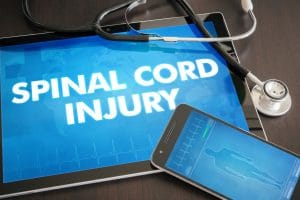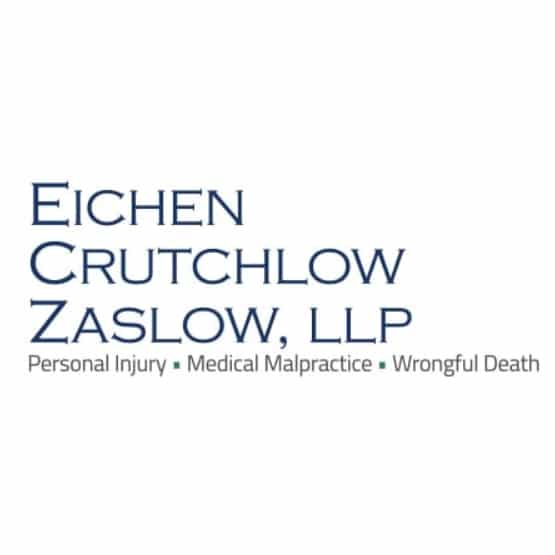What Kinds of Medical Treatments Are Available for Spinal Cord Injuries?
If you have suffered any trauma to your vertebral column and as a result has lost all or some motor and sensory function, you have what is considered a spinal cord injury (SCI). You will need to get an official diagnosis from your doctor to determine what treatments are available.

How are spinal cord injuries classified?
Spinal cord injuries fall into two categories: Complete SCI and Incomplete SCI.
- A complete SCI is an injury where the patient suffers a total loss of all of their sensory and motor functions beneath the area of the injury. Almost 50% of all spinal cord injuries are categorized as complete. When a person suffers a complete SCI, both sides of their body will see an equal impact. Compromised blood flow to an injured area of the spinal cord or a bruise on the spinal cord is what causes the loss of function.
- An incomplete SCI, on the other hand, is a spinal cord injury where the person continues to have some ability to function beneath where the injury occurred on their body. Those who suffer from an incomplete spinal cord injury will be able to move one leg or arm more than the other. They will also have a better ability to function on one side of their body compared to the other.
Recovery of the patient’s functions depends upon how severe the injury was he or she suffered. Those who suffer complete SCI will not be able to regain function beneath the location of the injury. If there is to be any improvement with the patient’s functions it often occurs within the first couple of days after the incident.
Incomplete spinal cord injuries usually show some degree of improvement over time, but it depends on the type of injury. Patients who suffer incomplete SCI might not recover completely but could experience enough recovery to have control over their bladder and bowel functions.
The grading scale of a spinal cord injury
To determine the severity of the spinal cord injury, injuries are graded by the ASIA grading scale. The scale is graded by letters A through E:
- ASIA A: This is a complete spinal cord injury that causes the loss of motor and sensory functions
- ASIA B: This is an incomplete spinal cord injury with complete motor function loss
- ASIA C: This is an incomplete spinal cord injury in which the patient has a little bit of movement but the muscle groups are anti-gravity
- ASIA D: This is an incomplete spinal cord injury in which more than half of the muscle groups are anti-gravity
- ASIA E: This is normal spinal cord function
If you or your loved one has suffered a spinal cord injury, the New Jersey SCI attorneys at Eichen Crutchlow Zaslow, LLP will fight for the compensation you deserve. Call one of our offices in Edison, Red Bank, or Toms River at 732-777-0100, or complete a contact form to schedule a consultation.
The first thing the doctor will do is check to make sure that the patient’s airway is working properly and that the patient has a pulse. The doctor will then evaluate the neurologic functions of the patient by testing the sensation and strength of their legs and arms. The patient will be placed in a cervical collar and on a spine board until complete imaging assessments can be completed.
Computerized tomography (CT scan) will be used to identify any bone abnormalities and fractures. An MRI is used to find herniated discs, blood clots, and masses that could be causing compression of the spinal cord.
Treatment for a spinal cord injury starts prior to the patient being admitted to the hospital. Emergency responders will immobilize the patient at the location where the incident occurred. Should the patient require emergency surgery, he or she will remain immobilized. Emergency surgery could be required for severe damage to the chest, abdomen, head, or another area of the body.
Will a spinal cord injury require surgery?
It depends on the severity, type, and location of your injury. Some SCIs will be permanent; even surgery will only provide a temporary fix.
However, surgery might be the best treatment method available. Patients who suffer from progressive neurological deterioration or an incomplete spinal cord injury will often receive this treatment method. Surgery might also be required to insure that the damage does not progress any farther.
What are some non-surgical treatments for spinal cord injuries?
Patients with spinal cord injuries will be admitted to the intensive care unit (ICU). Doctors might introduce traction in order to bring the spine into proper alignment. The patient will receive standard ICU care, which includes the following:
- Maintaining stable blood pressure
- Monitoring cardiovascular function
- Providing adequate ventilation and lung function
- Preventing and treating infections
After that, it depends on how serious the injury is. If the spinal cord is merely bruised, then the damage might go away once the swelling goes down. You may be given steroids to help reduce swelling.
One thing to be wary of is the promise of a new, “experimental” treatment or procedure – especially if it claims to use stem cells. These “therapies” are rarely proven, and they will not be covered by your insurance.
What may be covered, however, are assistive technologies and rehabilitation. According to a report published by the American Spinal Injury Association (ASIA), asymmetrical spinal cord injuries may be best suited to these types of programs and devices: “Some muscle movements, such as hand function or diaphragm contractions (to power breathing), have been enhanced by functional electrical stimulation (FES) of specific nerves or muscles.”
What is the cause of most spinal cord injuries?
For younger individuals, the leading cause of SCI is motor vehicle accidents; for individuals over the age of 65, the leading cause of spinal cord injuries is falling. Other common causes of spinal cord injuries involve acts of violence and sports or recreational activities.

Eichen Crutchlow Zaslow, LLP has purposely remained small in size, because it is important to us that we get to know our clients and their needs. Larger NJ injury firms may churn out case after case, but that’s not how we operate. Partners Barry Eichen, William Crutchlow, and Daryl Zaslow have created a firm with the resources to handle complex litigation, and a team that takes your case personally.
Find out more about Eichen Crutchlow Zaslow, LLP
